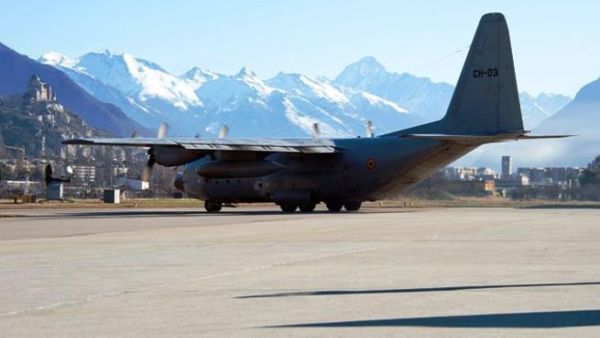The International Air Transport Association (IATA) has downgraded its profit outlook for the industry this year to $3 billion, primarily due to rising oil prices. However, Middle Eastern carriers are expecrted to see a rise in profit. The IATA forecast is $500 million less than its December estimate and is primarily driven by a rise in the expected average price of oil to $115 per barrel, up from the previously forecast $99.
Several factors prevented a more significant downgrade, including the avoidance of a significant worsening of the Eurozone crisis; improvement in the US economy; cargo market stabilization; and slower than expected capacity expansion.
“2012 continues to be a challenging year for airlines. The risk of a worsening Eurozone crisis has been replaced by an equally toxic risk—rising oil prices. Already the damage is being felt with a downgrade in industry profits to $3.0 billion,’’ said Tony Tyler, IATA's director general and CEO. Middle East carriers are expected to see profits of $500 million (up from the previously forecast $300 million).
Airline performance is closely tied to global GDP growth. Historically, when GDP growth drops below 2 per cent, the global airline industry returns a collective loss. “With GDP growth projections now at 2.0 per cent and an anemic margin of 0.5 per cent, it will not take much of a shock to push the industry into the red for 2012,” said Tyler.
IATA revised upwards its estimated profits for 2011 to $7.9 billion from the previously forecast $6.9 billion. This was primarily owing to the much better than expected performance of Chinese carriers.
Oil Price: The major driver of reduced profitability is rising oil prices. In December 2011, the consensus forecast for 2012 stood at $99/barrel for Brent crude. The average price year-to-date is approaching $120 and the consensus forecast for the year has been revised to $115 (from the $99 previously forecast). This will push fuel to 34 per cent of average operating costs and see the overall industry fuel bill rise to $213 billion. Political tensions in the Gulf region increase the risk of significantly higher oil prices, the implications of which could put the industry into losses.
Asset Utilization: Overall capacity (passenger and cargo combined) is expected to grow by 3.2 per cent in 2012 (based on announced schedules) which is behind the 3.6 per cent expected expansion in demand. This is a reversal of the expectation in December of capacity expansion (3.1 per cent) outstripping demand (2.9 per cent). Both passenger load factors and aircraft utilization have returned to or above pre-recession levels.
In January the passenger load factor stood at 76.6 per cent, which is more than 2 percentage points higher than pre-recession levels. The average hours flown by passenger aircraft is also close to pre-recession peak utilization rates. Asset utilization in freight markets is more difficult to manage as around 40 per cent of cargo capacity is in the belly of passenger aircraft, responding to different market pressures. Freight load factors in January were 6 per cent lower than the 2010 peak and average hours flown by freighter aircraft were down 11 per cent.
Passenger Demand: Passenger demand is expected to grow by 4.2 per cent, which is 0.2 percentage points ahead of the December forecast. January premium traveler numbers were up 2.9 per cent on previous year levels, while economy class travelers grew by 6.1 per cent. This reflects stronger business and consumer confidence in the US and Asia-Pacific.
Cargo Markets: Cargo markets stabilized at low levels in the fourth quarter of 2011. The pattern of rising sea freight and low level of air cargo is linked to Asian economies buying bulk commodities while Western consumer confidence is weak. Reduced pessimism among purchasing managers is expected to support a moderate upturn in air cargo during the second half of the year.
Yields: In December yields were forecast to be flat in 2012 for both passenger and cargo. Higher fuel costs, tighter capacity management in passenger markets and the stabilization of freight markets is now expected to drive a 2.0% yield improvement in 2012 for both passenger and cargo.
Regional Performance
All regions will see reduced profitability in 2012 compared to 2011, and Europe and Africa will see losses.
European carriers by far face the most difficult situation among the regions. The outlook remains unchanged from December with the expectation of a $600 million net loss and an EBIT margin of 0.3 per cent of revenues. While it appears that a major worsening of the Eurozone crisis has been averted, many European economies are in deep recession which will see continued weakness in both the cargo and passenger business. At the same time air travel is being hit by taxation and the cost of the EU ETS.
Middle East carriers are expected to see profits of $500 million (up from the previously forecast $300 million).
Financial performance was already seen to be better than previously expected in 2011, with an upgrade from $400 million to $1 billion. In the passenger business, load factors have improved by a slowdown in the introduction of new capacity, and long haul markets have been relatively robust.
A number of commentators have pointed to a scenario where an escalation of the crisis in Iran could see the closure of the Strait of Hormuz cutting off vital supply links for oil. In this scenario, oil prices could spike at $150/barrel for Brent crude mid-year, for a full year average of $135. In such a scenario, global GDP growth would fall to 1.7 per cent, plunging the entire industry towards losses of over $5 billion.
“While we have seen some improvements in economic prospects any further significant rise in the fuel price will almost certainly turn weak profits into losses,” said Tyler.








